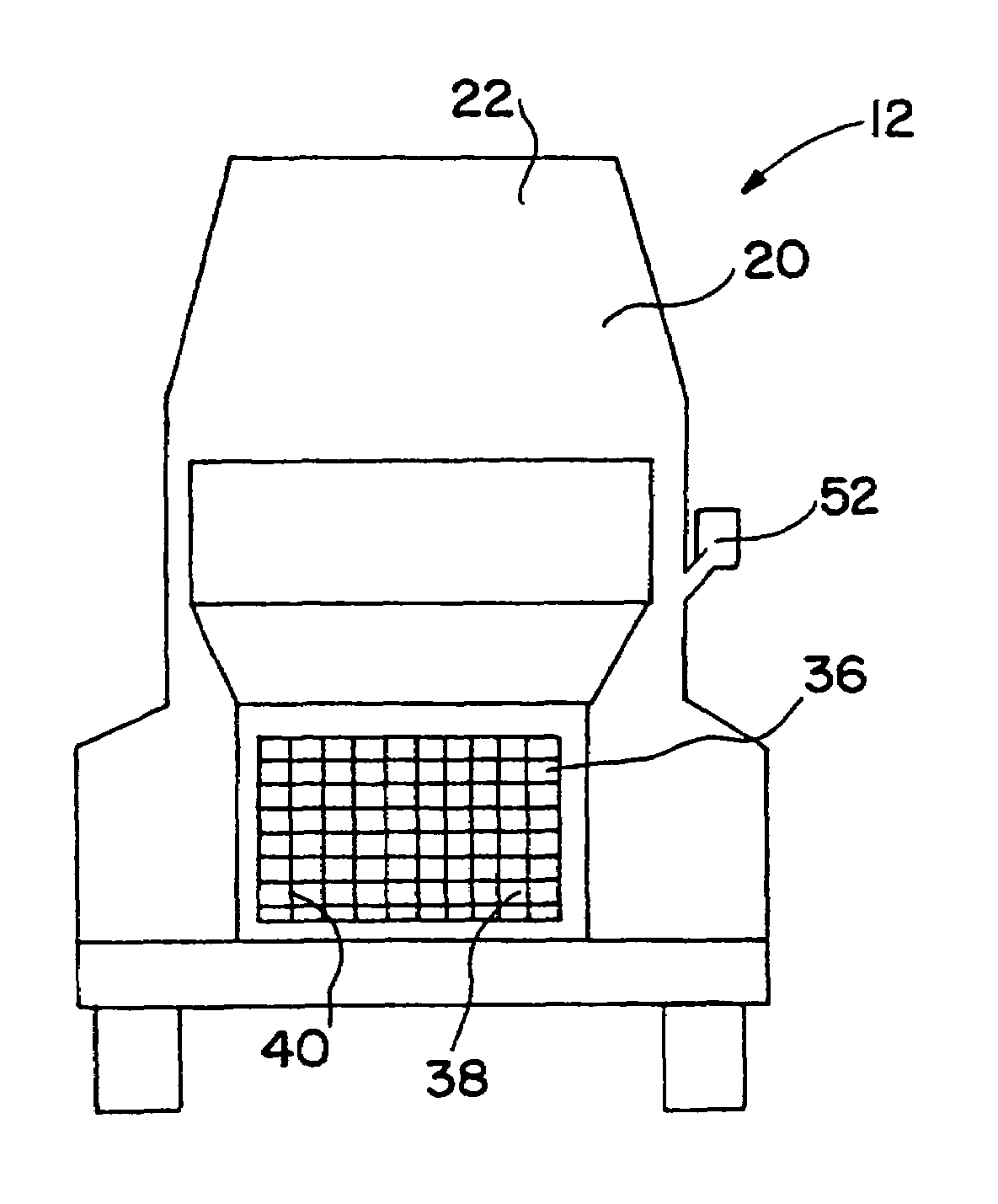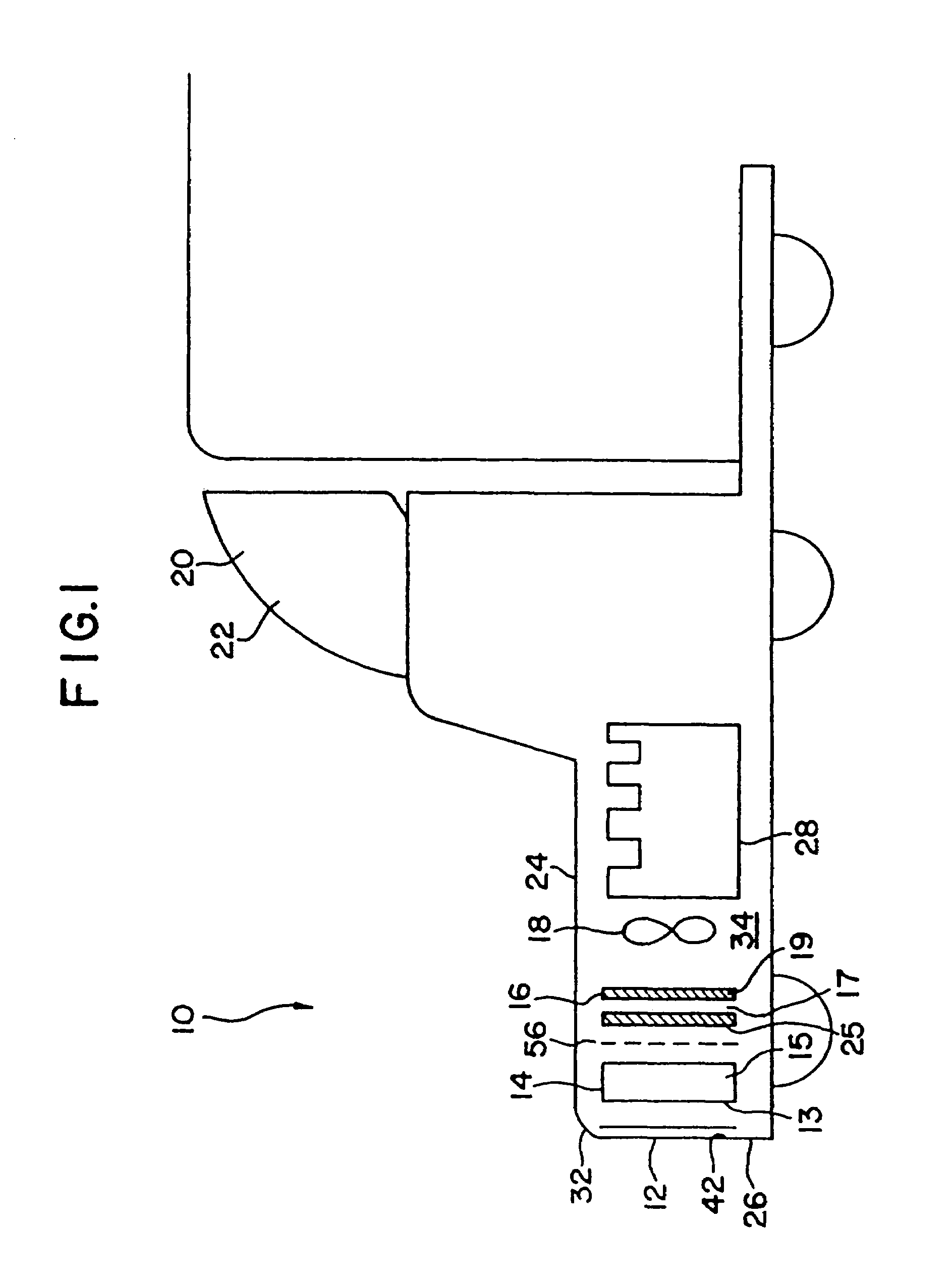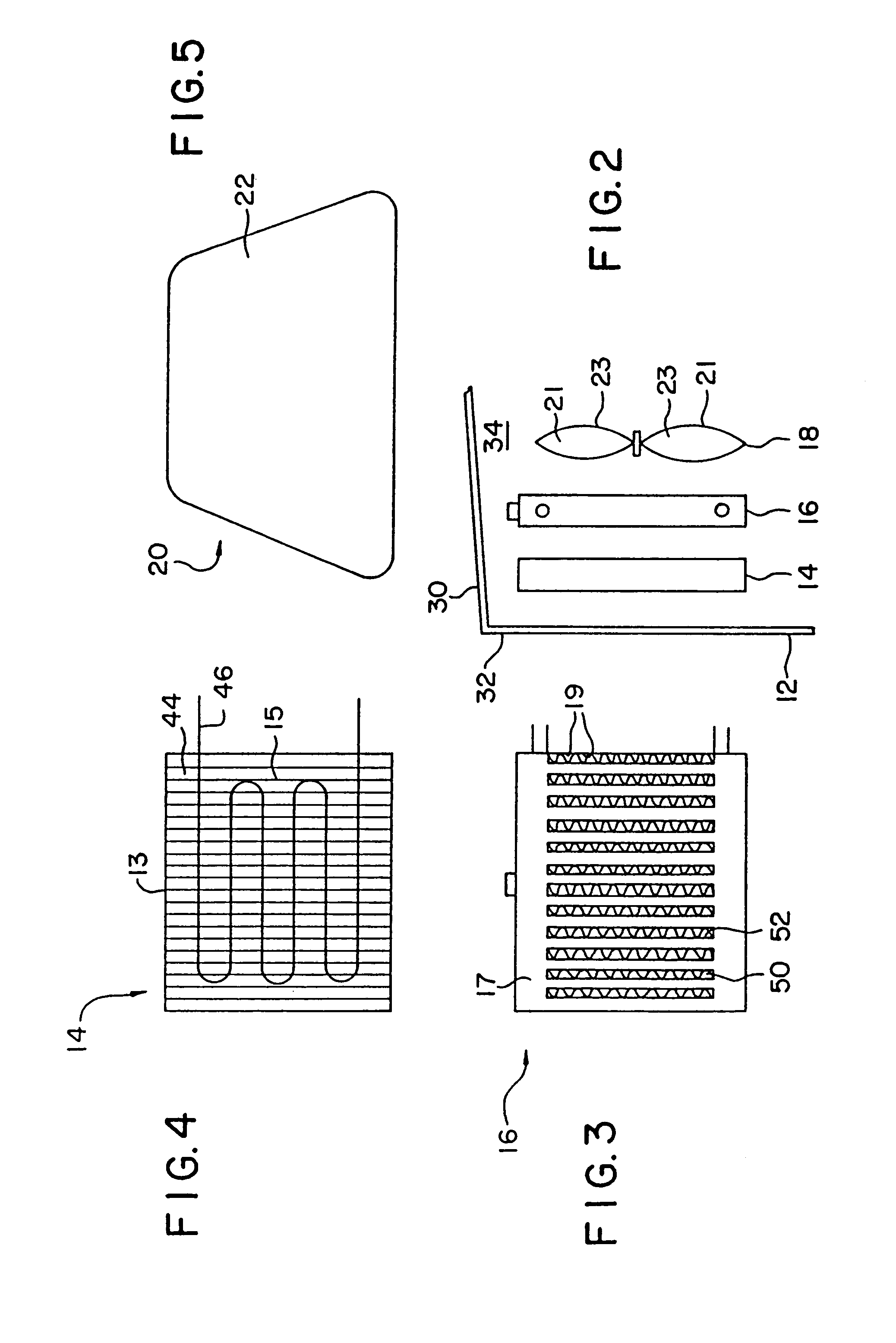Vehicle having atmosphere pollutant treating surface
a technology for pollutant treatment and vehicles, applied in the direction of metal/metal-oxide/metal-hydroxide catalysts, chemical/physical processes, combustible gas purification/modification, etc., can solve the problems of atmospheric air, needing new and additional equipment, and little effort to treat pollutants, so as to reduce the preferred catalyst for treating pollutants and reduce the embodiment of catalysts
- Summary
- Abstract
- Description
- Claims
- Application Information
AI Technical Summary
Benefits of technology
Problems solved by technology
Method used
Image
Examples
example 1
[0132]A 1993 Nissan Altima radiator core (Nissan part number 21460-1E400) was heat treated in air to 450° C. for 16 hours to clean and oxidize the surface and then a portion coated with high surface area silica-alumina undercoat (dry loading=0.23 g / in3) by pouring a water slurry containing the silica-alumina through the radiator channels, blowing out the excess with an air gun, drying at room temperature with a fan, and then calcining to 450° C. The silica-alumina slurry was prepared by ball milling high surface area calcined SRS-II alumina (Davison) with acetic acid (0.5% based on alumina) and water (total solids ca. 20%) to a particle size of 90%2.yAl2O3.zH2O with 92–95% by weight Al2O3 and 4–7% by weight SiO2 after activation. BET surface area is specified to be a minimum of 260 m2 / g after calcination.
[0133]A Pd / Mn / Al2O3 catalyst slurry (nominally 10% by weight palladium on alumina) was prepared by impregnating high surface area SRS-II alumina (Davison) to the point of incipient ...
example 3
[0136]After heat treatment for 60 hours in air at 450° C., a Lincoln Town Car radiator core (part #F1VY-8005-A) was coated sequentially in 6″×6″ square patches with a variety of different ozone destruction catalyst compositions (i.e., different catalysts; catalyst loadings, binder formulations, and heat treatments). Several of the radiator patches were precoated with a high surface area alumina or silica-alumina and calcined to 450° C. prior to coating with the catalyst. The actual coating was accomplished similarly to Example 1 by pouring a water slurry containing the specific catalyst formulation through the radiator channels, blowing out the excess with an air gun, and drying at room temperature with a fan. The radiator core was then dried to 120° C., or dried to 120° C. and then calcined to 400 to 450° C. The radiator core was then reattached to its plastic tanks and ozone destruction performance of the various catalysts was determined at a radiator surface temperature of about ...
example 4
[0147]A 1993 Nissan Altima radiator core (Nissan part number 21460-1E400) was heat treated in air to 400° C. for 16 hours and then a portion coated with Condea high surface area SBA-150 alumina (dry loading=0.86 g / in3) by pouring a water slurry containing the alumina through the radiator channels, blowing out the excess with an air gun, drying at room temperature with a fan, and then calcining to 400° C. The alumina precoat slurry was prepared as described in Example 3. The radiator was then coated sequentially in 2″×2″ square patches with seven different CO destruction catalysts (Table II). Each coating was applied by pouring a water slurry containing the specific catalyst formulation through the radiator channels, blowing out the excess with an air gun, and drying at room temperature with a fan.
[0148]The CARULITE® and 2% Pt / Al2O3 catalysts (Patch #4 and #6, respectively) were prepared according to the procedure described in Example 3. The 3% Pt / ZrO2 / SiO2 catalyst (Patch #3) was ma...
PUM
| Property | Measurement | Unit |
|---|---|---|
| operating temperatures | aaaaa | aaaaa |
| operating temperatures | aaaaa | aaaaa |
| temperature | aaaaa | aaaaa |
Abstract
Description
Claims
Application Information
 Login to View More
Login to View More - R&D
- Intellectual Property
- Life Sciences
- Materials
- Tech Scout
- Unparalleled Data Quality
- Higher Quality Content
- 60% Fewer Hallucinations
Browse by: Latest US Patents, China's latest patents, Technical Efficacy Thesaurus, Application Domain, Technology Topic, Popular Technical Reports.
© 2025 PatSnap. All rights reserved.Legal|Privacy policy|Modern Slavery Act Transparency Statement|Sitemap|About US| Contact US: help@patsnap.com



